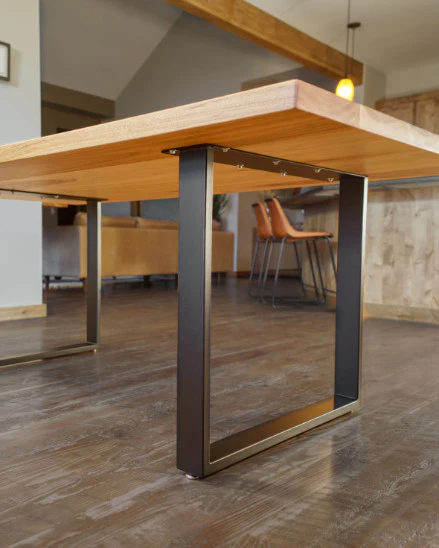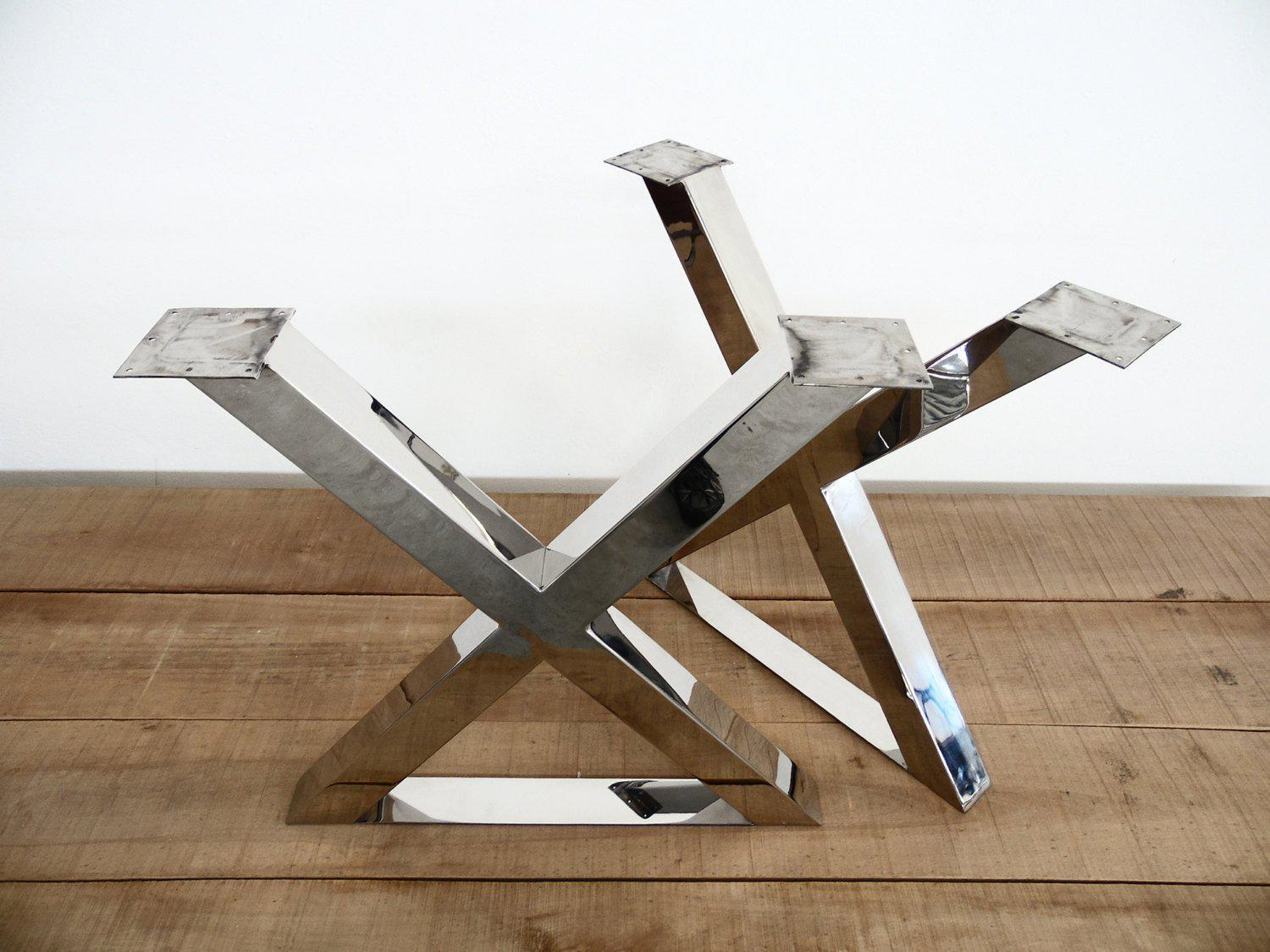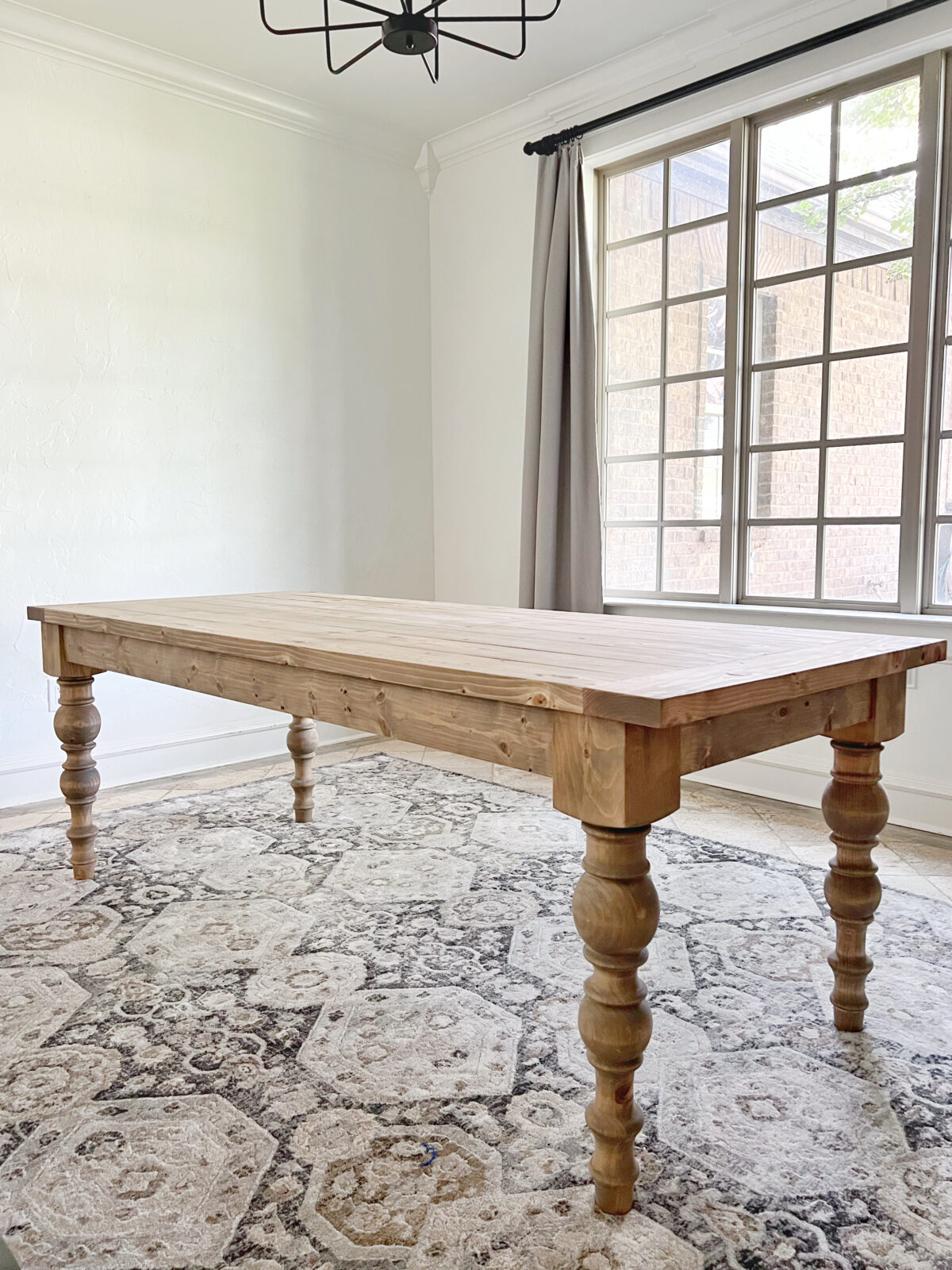Personalized Dining Room Table Legs: A Stylish Enhancement to Any Kind Of Home
Personalized Dining Room Table Legs: A Stylish Enhancement to Any Kind Of Home
Blog Article
Table Legs: Exactly How to Select the very best Designs for Your Room
Picking the right eating table legs is essential for both visual and functional consistency in your dining area. Whether your area boasts a streamlined, modern ambiance or leans towards a much more typical atmosphere, the design of the legs can considerably affect the total look. Conical legs exude contemporary style, while turned legs use a nod to timeless charm.
Examining Your Eating Room Style
Exactly how do you establish the best table legs for your area? The response starts with a thorough assessment of your dining room style. A cohesive style makes sure that your table legs boost the total visual as opposed to encounter existing components. Beginning by observing the building attributes of your eating area. Exist noticeable features such as revealed light beams, detailed moldings, or minimal lines? These information usually determine whether a typical, rustic, modern, or commercial style is most suitable.
Next, consider the existing furnishings and decoration. The materials, colors, and appearances within the space play a vital role. An eating room with streamlined, contemporary chairs and metallic accents might benefit from simple, streamlined table legs. Conversely, a room filled up with vintage pieces and rich materials could call for elaborate, carved legs.
Illumination additionally affects assumption. Natural light can emphasize specific products and finishes, while fabricated lighting can highlight various aspects. Account for the space's range and proportions. Big, open eating rooms can fit larger, much more significant legs, whereas smaller areas call for more delicate, inconspicuous layouts. By thoroughly examining these factors, you can select eating table legs that sympathetically blend with your dining space's design.
Popular Leg Styles Discussed

One widespread style is the conical leg, renowned for its smooth, modern-day look. This leg tightens from top to base, providing a minimal appeal ideal for contemporary and Scandinavian interiors. Next off, the turned leg attributes elaborate spindle-like layouts, frequently located in conventional and farmhouse setups. These legs include a touch of craftsmanship and style.
Cabriole legs, with their distinctive curves, are identified with French Provincial and Queen Anne furnishings. Their graceful, streaming lines bring a feeling of refinement and historical appeal (dining room table legs). For those preferring a durable and uncomplicated design, square legs offer tough assistance and a clean, geometric appearance, ideal for industrial or minimal rooms
Last but not least, hairpin legs provide a retro, mid-century contemporary vibe. Made from steel, these legs are both light-weight and solid, including an unique visual comparison to wood table tops. Recognizing these styles will certainly guide you in choosing table legs that enhance your space's visual and functionality.
Material Considerations

Metal legs, typically made from stainless steel, iron, or light weight aluminum, give a modern and industrial look while making sure durable assistance. They why not try here are typically much more immune to use and tear, making them a sturdy selection.

Other products like bamboo or rattan provide eco-friendly choices, bringing a natural and kicked back vibe to the eating location. Each material has its benefits and drawbacks, and the most effective selection will depend upon your specific requirements and choices.
Balancing Aesthetics and Performance
Attaining the ideal equilibrium in between aesthetic appeals and capability is important when picking table legs. While the visual charm of table legs can significantly enhance the general setting of a dining space, their practical facets can not be overlooked. The style of the legs need to integrate with the room's design, yet they need to additionally provide sufficient assistance and security for the table.
Take into consideration the architectural design of your area. Smooth, modern-day insides might gain from minimalist, metal legs that provide a clean and unobtrusive appearance. On the various other hand, typical setups often complement turned or carved wooden legs that add a touch of beauty and elegance.
Performance includes the security and toughness of the legs. For circumstances, trestle legs, recognized for their effectiveness, can check over here give solid assistance for bigger tables, making them excellent for family members or constant artists. dining room table find more legs. On the other hand, pedestal legs can use more legroom and flexibility, allowing for far better seats plans
Furthermore, the height and positioning of the legs are crucial for comfy eating. Legs put too far internal may impede seats, while those as well near to the edge can restrict motion. Thus, thoughtful factor to consider of both visual and practical elements is extremely important for an optimum dining experience.
Customization and Do It Yourself Options
Modification opens up a realm of possibilities for creating eating table legs that are distinctively tailored to your preference and requirements. Whether you seek a typical, contemporary, or eclectic appearance, customized alternatives enable you to select the specific materials, finishes, and develops that ideal complement your space. Adjustable options array from selecting the kind of wood-- such as oak, maple, or walnut-- to picking metal coatings like brushed nickel or antique brass. Specific style components, such as turned legs, tapered forms, or intricate carvings, can be included to reflect your style.
For those likely in the direction of do-it-yourself (DIY) jobs, developing custom table legs uses both a rewarding experience and the chance to accomplish a bespoke visual. Do it yourself fanatics can source basic materials and use woodworking or metalworking devices to craft legs that fulfill specific specifications. Additionally, many on the internet tutorials and workshops give guidance, making the process much more available for novices.
Inevitably, whether choosing specialist modification or embarking on a DIY endeavor, the ability to tailor table legs ensures that the end product integrates with your indoor layout vision, boosting both capability and visual allure.
Verdict
Choosing the proper dining table legs needs cautious consideration of the total design of the dining-room, including existing architectural features and furnishings. Recognizing preferred leg designs and material options is important for achieving an unified visual. Balancing aesthetic appeals with performance guarantees stability and boosts the eating experience. Personalization options better permit for a tailored design. Inevitably, the selected table legs ought to complement the style, supplying both visual allure and functional support.
Report this page